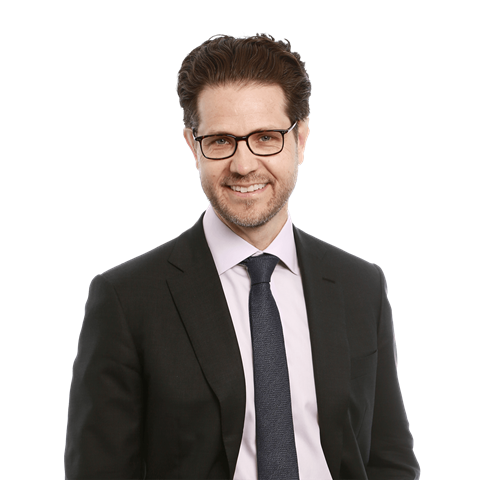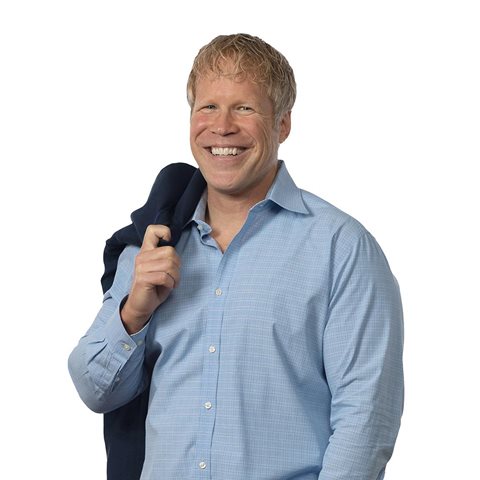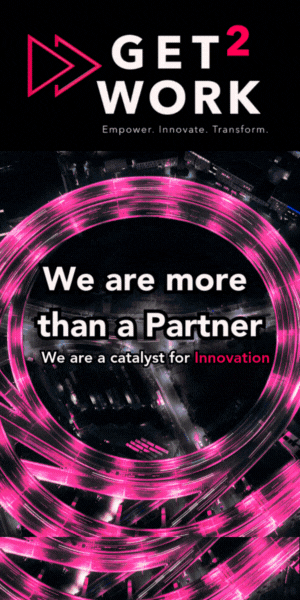Blog
Blog
The CEO’s essential checklist: Questions every chief executive should be able to answer

A great aviator is constantly aware of their surroundings. Watching for changes in the weather and in the paths of other aircraft is vital. The same is true for being a great CEO, which is why the business press is full of information about what’s happening in the business environment: geopolitics, regulatory changes, inflation, generative AI, and so on.
Equally important for a pilot’s success is understanding their aircraft and its avionics: checking fuel levels and flight plan progress, testing safety systems, and keeping an eye on engine performance. To ensure a successful trip, pilots utilize checklists before, during, and after the flight. For CEOs, the same should hold true. However, when doing research for our New York Times best-selling book, CEO Excellence: The Six Mindsets That Distinguish the Best Leaders from the Rest (Scribner/Simon & Schuster, March 2022), we found that no such checklists existed for the role of the most senior leader. Sure, CEOs have an abundance of financial, operational, and organizational metrics to look at, but what CEOs should be doing to influence those metrics wasn’t exactly clear.
Over the past two years of talking with CEOs about our findings, we’ve been struck by how many have asked for an “in flight” checklist. In response, we’ve crystalized how the mindsets that underpin CEO Excellence translate into practice in each of the six responsibilities of the CEO’s role: setting direction, aligning the organization, mobilizing through leaders, engaging the board, connecting with stakeholders, and managing personal effectiveness (exhibit). In doing so, we’ve drawn on in-depth interviews with more than 70 of the most successful current and former CEOs of the 21st century, including the likes of Microsoft’s Satya Nadella, JPMorgan Chase’s Jamie Dimon, Lockheed Martin’s Marillyn Hewson, Sony’s Kaz Hirai, and American Express’s Ken Chenault.

The result is this 18-question checklist. (A downloadable version can be found at the end of this article.) Just as we’d expect any conscientious pilot would do, we hope that CEOs will use this checklist to safely navigate their organization’s performance to new heights.
Direction-setting checklist: Be bold
1. Vision: Do we have a clear and compelling vision that reframes what winning looks like, and is it owned by the whole enterprise?
A great answer to this question lies not just in having raised the aspiration levels for the organization but also in having reframed the very definition of success. At Mastercard, for example, under Ajay Banga, the vision wasn’t “win in payments”; it was a “war on cash,” recognizing that at the time, 85 percent of global retail transactions were cash based. Masahiko Uotani wasn’t content letting Shiseido aspire to being a Japanese beauty icon—it was to be a global beauty icon with Japanese heritage. At Adobe, Shantanu Narayen helped the company see that success wasn’t about providing the best creative professional desktop tools for websites, it was about powering the world’s best digital creativity, document, and customer experiences. Imagine if Reed Hastings’ vision at Netflix had been “to be the number-one DVD company in America.” Instead, he focused the company on becoming a “global entertainment distribution company that provides a unique channel for film producers and studios,” making entertainment history as a result. The best CEOs find ways to ensure that their colleagues take ownership of what such expanded visions mean for the company and for their specific roles.
2. Strategy: Have we created a short list of clearly defined big moves at the enterprise level that will distance us from our competitors?
The best CEOs focus—early and often—on a bold short list of big strategic moves during their tenure. These moves typically involve a combination of M&A activity, capital investment, productivity improvement, and product and service differentiation, each pursued at least 25 percent more aggressively than their competitors.1 At Banco Itaú Unibanco, for example, Roberto Setúbal’s big moves included shifting the bank from being retail only to being a leader in corporate and investment banking; expanding into other Latin American countries; radically reducing overhead and increasing efficiency; overhauling the company’s performance culture; negotiating and executing the megamerger with Unibanco; and prioritizing investments to digitize the bank. The result: over his tenure, revenue increased 25-fold and market cap more than 30-fold. When Satya Nadella became CEO of Microsoft, in 2014, his short list of big moves was clear: double investment in the cloud, change the software business model from box to subscription, invest $50 billion in productivity and services acquisitions, sell the mobile phone business, and create a growth mindset. As we write this article, Microsoft is one of the three most valuable public companies on the planet, with a market cap of over $3 trillion.
3. Resource allocation: Are we ‘thinking like an outsider’ to actively reallocate resources (such as dollars, people, and management attention) to our highest priorities, even when it’s hard to do?
The highest-performing companies shift more than 60 percent of their capital expenditure among business units over ten years. In other words, their CEOs think like an outsider would. Intel’s former president Andy Grove and former CEO Gordon Moore did so famously in the 1980s when the company’s share price was in a free fall. Grove asked Moore, “If we got kicked out, and the board brought in a new CEO, what do you think they would do?” Moore answered, “They would get us out of memory chips.” Grove stared at him and said, “Why shouldn’t you and I walk out the door, come back, and do it ourselves?” The rest is history, as Intel would go on to become the world’s most successful chipmaker for many years. Marillyn Hewson put this thinking into practice at Lockheed Martin by regularly pulling her team together to review all of the company’s investment plans. “We shave[d] off the stuff at the bottom,” she explains, “[so we could] double down on the things . . . we need to go after as a corporation.” Doing so isn’t easy; to invest more in one area means investing less in another.
Organizational-alignment checklist: Treat the soft stuff as the hard stuff
4. Culture: Are we targeting and systematically pursuing specific areas of cultural change to further execute our strategy?
When using culture as a lever to improve performance, winning CEOs pursue one or two big shifts relentlessly. Paul O’Neill, the former CEO of aluminum maker Alcoa, famously focused on creating a safety culture, and a massive performance improvement followed. His logic was straightforward: “I knew I had to transform Alcoa, but you can’t order people to change. That’s not how the brain works. So, I decided I was going to start by focusing on one thing. If I could start disrupting habits around one thing, it would spread to the entire company.” Microsoft’s Satya Nadella crystalized what a growth mindset meant for employees when he described the shift from being “know-it-alls” to “learn-it-alls.” For Santander’s Anna Botín, three words summed up the way she wanted her employees to approach their banking customers—and one another: “simple, personal, and fair.”
5. Organizational design: Is our organization characterized by a balance of stability and agility that maximizes the speed and effectiveness of execution?
Excellent CEOs build flexibility into their organization’s design while maintaining strong structural integrity (a combination of stability and agility we often refer to as “stagility”). The research shows why: companies that are both stable and agile are four times more likely to be high performing than those that are stable but lack agility. Intuit’s Brad Smith, for example, says the stable elements of his software company are organized “first around the customer segment, and then, underneath that, around the specific problems for the customer. That does not change. We also have centralized teams that work across the customer’s problems to drive things at scale as a platform company.” As for the agile elements, he explains: “We got sharp and moved fast on strategic questions by assigning them to teams of three people who haven’t worked with each other.” Google’s Sundar Pichai employs a similar approach of assigning a team and leader who can bypass certain approvals and move faster than normal practices allow. “You need to design sanctioned ways by which people can break the structures you’ve set up,” he says.
6. Talent: Are the most value-creating roles in our organization filled with the right talent, and do they have a strong leadership pipeline?
Knowing what roles in the organization create the most value and then matching them with “best fit” talent is a hallmark of excellent CEOs. For example, at one key Blackstone portfolio company with 12,000 employees, Stephen Schwarzman and his team identified the 37 positions that drove 80 percent of the company’s value. They then made sure these jobs were filled with top leaders, and that succession planning for those roles was robust. CEOs who apply this type of rigor find on average that of the 50 most important roles in their organizations, typically only 10 percent report directly to the CEO, 60 percent exist at the next level down, and 20 percent are at the level below that. The last 10 percent are often roles that don’t exist but should. For instance, Duke Energy’s Lynn Good realized she needed a generation and transmission market transformation officer when she applied this lens to talent. Pursuing a patient-centric strategy, Cleveland Clinic’s Toby Cosgrove created a chief experience officer to better his patients’ health journey.
Leadership mobilization checklist: Solve for the team’s psychology
7. Team composition: Is my senior team the right size, comprising people with complementary skills and characterized by an ‘enterprise first’ mindset?
A group of individual high performers becomes truly effective only if its members’ skills are complementary, and if they work in ways that make the whole more than the sum of the parts. When Lilach Asher-Topilsky became the CEO of IDB, one of Israel’s largest banks, the company was underperforming financially and falling behind in digitization. Asher-Topilsky realized that many of her top executives lacked the capability and drive to make the needed changes. She eventually switched out roughly half of her top team. Getting the right players, however, was only part of the battle. “The key was to have people who understand the joint mission and are not just thinking about their own promotion,” she shares. To cement this psychology, Asher-Topilsky dubbed IBD’s management team “the Fist” because, in her words, “You can’t get in the lines between the fingers. Not the board of directors, union, competitors—not anyone.” By the time Asher-Topilsky left the CEO job, IDB had become a leader in digital banking, and under her tenure, the bank’s return on equity doubled, and its net profits tripled.
8. Teamwork: Does my senior team effectively use data and dialogue to make timely decisions on topics that only they can take on?
Only 6 percent of top HR executives agree with the statement that “our company’s executive team operates as a well-integrated team.” Great CEOs don’t let this happen. How? They focus the team on the work that only the team can do, such as corporate strategy, large-scale resource allocation, cross-cutting synergies and interdependences, the company’s leadership bench, and so on. They don’t focus on topics related to individual functions, business units, or subsets of those groups. As Doug Baker, former CEO of the water and hygiene services company Ecolab, summarizes, “My role is making sure the top team does the big things really well . . . all the rest is email.” In team meetings, the best CEOs demand data, dialogue, and speed. As Roger Ferguson, who led the financial-services group TIAA, explains: “The numbers don’t lie. But numbers don’t necessarily tell you exactly what they mean, which is why dialogue is important.” Getting the balance right while moving at pace requires discipline. For example, DBS Group’s Piyush Gupta uses a technique he calls MOJO: The meeting owner (MO) makes sure the right prework is done and that the discussion is well organized. The joyful observer (JO) critiques the meeting as it goes.
9. Operating rhythm: Does my senior team have an effective annual operating rhythm and business review cadence that drives execution and minimizes surprises?
“When people know there’s an organizational rhythm, it allows them to be more efficient,” shares Flemming Ørnskov, CEO of the skin care company Galderma. “They know where in the organization to go to get decisions . . . and it enables me both to best leverage the great people that work for me and to ensure I have the right amount of time outside of meetings.” While there’s no one-size-fits-all answer to the right operating rhythm, most high-performing CEOs hold a weekly, relatively informal check-in with their senior team, a more formal monthly meeting, and a multiday off-site meeting at least once during the year (often paired with bringing a few hundred top leaders together). In addition, the CEO, CFO, and chief human resources officer typically conduct business performance reviews at least quarterly, and the CEO holds monthly one-on-ones with team members, at a minimum. Such reviews shouldn’t be flybys, as GE’s Larry Culp explains: “I’ve seen a lot of my peers give their business unit CEOs a lot of room because that’s what they always wanted when they were in the role. Then someone surprises them, and not in a good way, and they start to think differently.”
Board engagement checklist: Help directors help the business
10. Relationships: Have I built trust with my board members by being ‘radically transparent’ and showing an interest in their views?
Great CEOs establish a trust-based relationship with their boards. Doing so starts with being transparent. Former Cadence Design Systems CEO Lip-Bu Tan explains the benefits: “Creating a transparent culture makes things easier for me. When management wants to push for a decision, it’s no surprise for the board. They already know what we’re trying to do. The board works with me.” TIAA’s Roger Ferguson describes this as “radical transparency.” One of the first things that Thermo Fisher Scientific’s Marc Casper did when he took the top role was to start every board meeting with an executive session. “I focused on what I was worried about and the challenges we were facing,” he says. “My sole reason for that was to create a culture of transparency. You earn people’s trust, and they hold you to a high standard. It elevates the dialogue and the impact.” Trust with board members is also built one-on-one outside the boardroom. CEOs who excel make it their mission to personally get to know each director’s worldview, priorities, preferences, and specific talents. This is typically achieved by making the rounds of all board members at least once a year (more often early in a CEO’s tenure). With the board chair (or lead director), however, interactions are far more frequent and informal—often weekly.
11. Capabilities: Do we have the right profiles on the board, and are we sufficiently educating directors and pulling them in to help where they can?
The best CEOs work with their board chair or lead director to ensure the board composition reflects the direction of the organization. Intuit’s Brad Smith explains, “We adopted some systematic ways to influence the board’s makeup—without doing the board’s job. One tool is the capability matrix. It lists across the top the skills and domains needed on the board to deliver our strategy, and below it lists every director’s name.” Such a matrix can also be checked to ensure the right levels of cultural, gender, race, and geographic representation. At the information services firm Wolters Kluwer, Nancy McKinstry used such an approach to reshape its all-Dutch board, and now a majority of its seats are held by other nationalities. She also brought in tech talent and people with experience in the company’s main customer markets. Beyond composition, as Netflix’s Reed Hastings puts it, “The board really needs to understand the business, and helping them to do so is something the CEO should feel it’s their duty to do.” Doing so typically happens through orientation sessions, educational events, and guest speakers.
12. Board meetings: Are board sessions well prepped, effectively run, and focused on the future (going well beyond fiduciary topics)?
The intrinsic nature of governance is about preventing bad things from happening. The best CEOs, however, ensure that time spent in the boardroom doesn’t become consumed with, as DBS’s Piyush Gupta puts it, “the board being a policeman on top of the business.” Instead, they consider the board meetings an opportunity to tap into the wisdom of a group of smart people with similar interests, or as Mastercard’s Ajay Banga viewed it, “The best expert consultants you can get; they’re dying to do anything for you.” When American Express’s Ken Chenault was pursuing a substantial reengineering effort, his board pushed him to think beyond operational improvements. They urged him to think about major investments to turn the company’s card and payments products into service platforms. “There was a really good discussion and exchange of ideas,” Chenault reflects. To get the most out of a board, agendas go beyond fiduciary discussions to include topics such as strategy, organizational health, and talent. The best CEOs deftly sync board discussions on forward-looking topics with management’s operating rhythm. GE’s H. Lawrence Culp, Jr. explains: “It becomes very easy to prepare for board meetings if the cadence and rhythm with the board mirrors how we run the company.”
External-stakeholder-connection checklist: Start with ‘Why?’
13. Purpose: Are we clear on the holistic impact we aspire to (our ‘why?’), and have we embedded that into the core of how we run our business?
The best CEOs see their companies’ purpose as fundamental to business performance. Companies with a clear sense of purpose enjoy increased customer loyalty, better efficiency, motivated employees, a lower cost of capital, and an increased ability to spot and mitigate risks earlier than others. If you ask a Lockheed Martin employee what their job is, says Marillyn Hewson, “They’ll tell you they’re not just building airplanes, radars, and missile defense systems—they’re helping US and allied forces strengthen global security. They’re not just writing software—they’re helping governments deliver essential services to citizens. They’re not just designing satellites and rockets—they’re expanding the boundaries of scientific discovery.” Such sentiments, however, must go beyond words. They need to be embedded into the core of the business: strategy, product design, supply chain, metrics, and incentives. At Best Buy, for example, former CEO Hubert Joly found that testing the company’s strategy and operations against its purpose of enriching lives through technology opened new growth opportunities. “It vastly expanded how we thought about what we could do for customers,” he shares.
14. Interactions: Do we fully understand our stakeholders’ needs (their ‘why?’) and find constructive common ground with them?
Understanding the “why” of your stakeholders is also critical. Doing so creates more profound connections, resolves more conflicts, and, at minimum, establishes a baseline of respect. Netflix’s Reed Hastings offers an example: “Take the press. . . . My general view on the press is they want to be truth tellers, but they’re forced to be entertainers. If you can understand that conflict, you can help them be entertaining and also get some truth through.” Approaching stakeholders in this way gets them talking more, which can create opportunities. Galderma’s Flemming Ørnskov got ideas for “at least two or three deals” from doctors he spoke with. Dupont’s Ed Breen says of activist investors, “If you listen, they often have good ideas.” Dsm-firmenich’s bold transformation from a petrochemical company to a nutrition and health company was inspired in part by the time that former CEO Feike Sijbesma spent with the United Nations. That said, external demand for CEO time can be overwhelming—the best leaders cap the time they will spend with external stakeholders (typically at 30 percent or less) and prioritize who they meet with accordingly. Intuit’s Brad Smith explains, “Anyone who wants a part of [that time] has to prove why they’re a better use of your time than something else.”
15. Moments of truth: Have we built resilience ahead of any potential crises so that we’ll be able to mitigate their impact and use them to unlock opportunities?
No matter how well a company is run, the question for even the best CEOs isn’t if they’ll have to lead through a crisis but when. From 2010 to 2019, the number of headlines that carried the word “crisis” alongside the world’s largest 100 companies increased by 80 percent from the previous decade. Esquel’s Marjorie Yang shares her best practice through a memorable analogy: “When you have a crisis, it’s like a sailboat going into a storm. You’ve got to prepare your boat before you head into the storm, and once you’re under way you can’t expect people will know what needs to be done at the last minute.” Accomplishing this is hard to do in practice, as Caterpillar’s Jim Owens shares: “In ’07–’08, everyone was convinced we needed to double capacity. The next year, [customers] took less than half of what they had on order!” Fortunately, Owens had the company stress test itself annually. “I had all the divisions tell me what they’d do to maintain profitability if their businesses were hit with the worst cyclical drop in 25 years,” he shares. “They were all beginning to think it was a stupid exercise after five years of record growth and profit. But in the sixth year, we said, ‘OK, get your deep recession scenario out and implement it.’”
Personal-effectiveness checklist: Do what only you can do
16. Time and energy: Do I manage my time and energy well, and do I have the right office support in place to help me successfully and sustainably do what only I can do as the CEO?
Legendary executive coach and CEO Bill Campbell often said of the CEO role, “No one has ever lived to outwork the job. It will always be bigger than you . . . you’re not going to outwork it.” This is why the best CEOs, such as Caterpillar’s Jim Owens, believe you should “prioritize the most critical issues that only the CEO can solve and delegate any remaining tasks.” From there, the key is to master compartmentalization. As U.S. Bancorp’s Richard Davis shares, “Compartmentalization is essential. If you bring every burden to every meeting, you let the day start to pile up on you.” The best leaders plan their schedules to avoid energy troughs (long periods of draining activity that leave them worn down). A strong office staff is essential to doing so and typically includes a dedicated administrative assistant or two (one for the calendar, one for travel and logistics) and a talented chief of staff. Intuit’s Brad Smith spent the first half of his tenure without the latter and regretted not hiring one sooner. “It was a game changer,” he shares. “It gave me the ability to scale my leadership exponentially.”
17. Leadership model: Am I leading in a way that is authentic to my convictions and values while also adjusting my behaviors to what the organization needs?
The best CEOs are keenly aware of the difference between doing and being, and the tremendous potential of getting both right. Former Cincinnati Children’s Hospital CEO Michael Fisher clarifies the distinction: “I’ve always had a decent amount of discipline around writing down ‘to-dos.’ But I also purposefully give thought to, and am really intentional about, how I want to show up every day. So I’ve added a ‘to-be’ list to my repertoire.” Choosing how “to be” involves finding the intersection of staying true to one’s principles and values while also being the leader the company needs you to be. When dsm-firmenich’s Feike Sijbesma received feedback from his team on his style, for example, his immediate response was: “Listen, that’s just the way I am. It’s authentic.” To his surprise, the pushback was: “OK, but why do we sometimes need to suffer from that?” His authenticity was valued, but it needed to be coupled with better leadership skills. “It wasn’t the most pleasant experience,” Sijbesma says. “It really had an impact on me and helped my career.”
18. Perspective: Do I approach my position with humility, focusing on helping others to succeed and continually improving my ability to do so?
“As a CEO, you often don’t realize how much of the input you get is filtered by the job you have,” reflects Intuit’s Brad Smith. “It’s no secret that we all get ten inches taller and our jokes get funnier the day we assume the role.” Not only are CEOs increasingly isolated from constructive criticism, but they don’t receive the direct input they used to get from peers or have a boss observing and giving them feedback on their daily behavior. To continually improve, the best CEOs replace questions such as “How did I do?” with “What could I have done better?” They often work with an executive coach, take time to read for knowledge and inspiration, attend external conferences and educational programs regularly, and have a small but diverse group of trusted confidants to provide them with discrete and confidential feedback. Above all else, they view their success as directly related to their ability to put the conditions in place for others to succeed. U.S. Bancorp’s Richard Davis puts it starkly: “Practicing humility will win you more followers than any strategy or tactic or mandate you’ll ever have.”
All the CEOs we’ve worked with who have used this checklist to assess their performance in the role have found the exercise valuable—so much so that many now review it regularly to ensure these aspects of piloting the organization are well in hand. The highest-performing CEOs also recognize that when it comes to personal behavior, self-assessments can be unreliable. An “optimism bias” accounts for why, for example, 86 percent of CEOs believe they act as a positive role model, whereas only 53 percent of their direct reports concur. To cut through this bias and gain maximum insight from the checklist, the best CEOs ask a handful of board members, executive team members, and other trusted confidants to give them honest feedback on their performance based on the questions above. Taking this approach reflects the CEO Excellence traits of humility and continuous learning and, in turn, provides CEOs with a well-calibrated view of what’s working and how they can fly even higher.
Being a top gun pilot requires as much intuition as it does instruction, and the same holds true for being a CEO. Judgment and creativity will always be important differentiators of the best from the rest. As with flying, however, it’s best practice to undergird these qualities with systematic checklists to make sure no critical details are missed and that a leader’s instincts won’t fail them when their attention is stretched. By doing so, CEOs will be able to successfully navigate any environment they fly through.

Download the checklist here.
About the author(s)
This article was edited by Rick Tetzeli, an executive editor in the New York office.












